Wave pools represent a remarkable fusion of technology and engineering designed to bring the thrill of surfing to a controlled, artificial environment.
Mimicking the ocean’s dynamic forces, these pools produce large, rhythmic waves that allow you to surf far from the natural coastline.
Their underlying mechanisms vary, but the essential function remains the same across all designs – to generate consistent and replicable waves suitable for surfers of various skill levels.
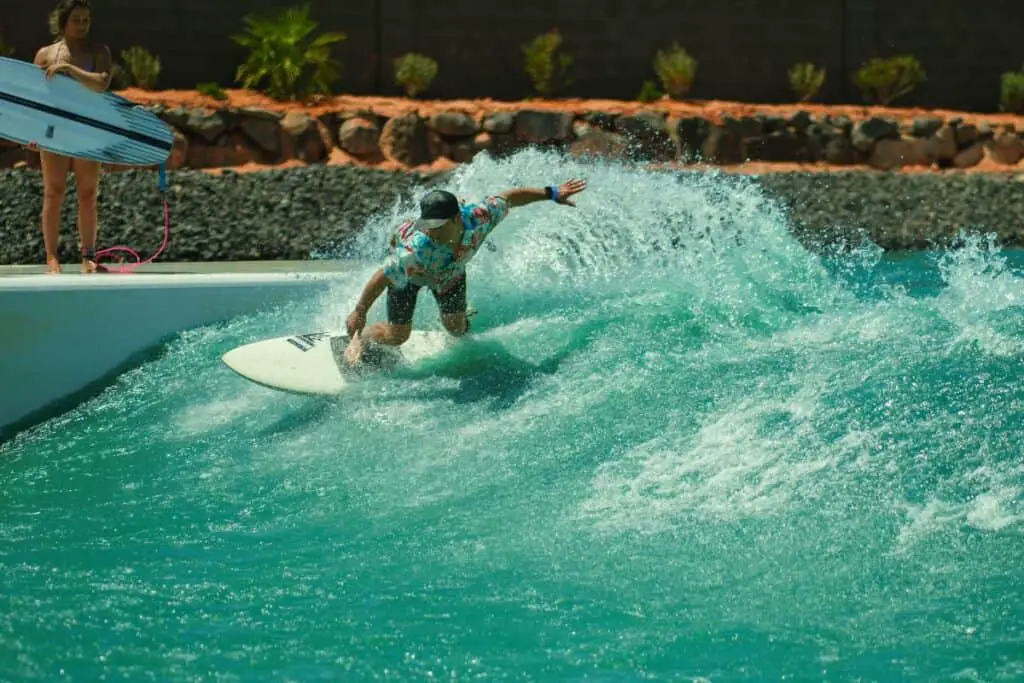
To create these artificial waves, different types of wave-generating technology come into play.
Some pools might employ high-speed fans to push air through wide metal pipes, manipulating the water’s surface with the assistance of strategically placed valves.
Others use hydrofoil systems, pulling a submerged blade along a track to displace water and form a wave.
Such intricacies of design and functionality are focused on simulating an authentic surfing experience, where the consistency of the waves adds to the practicality of predictable surf conditions.
Fundamentals of Wave Pool Dynamics
Wave pools replicate the ocean’s natural waves by using sophisticated wave-generating technology. Understanding the mechanics that drive these artificial waves gives you insights into this intersection of engineering and recreation.
Mechanics of Wave Generation
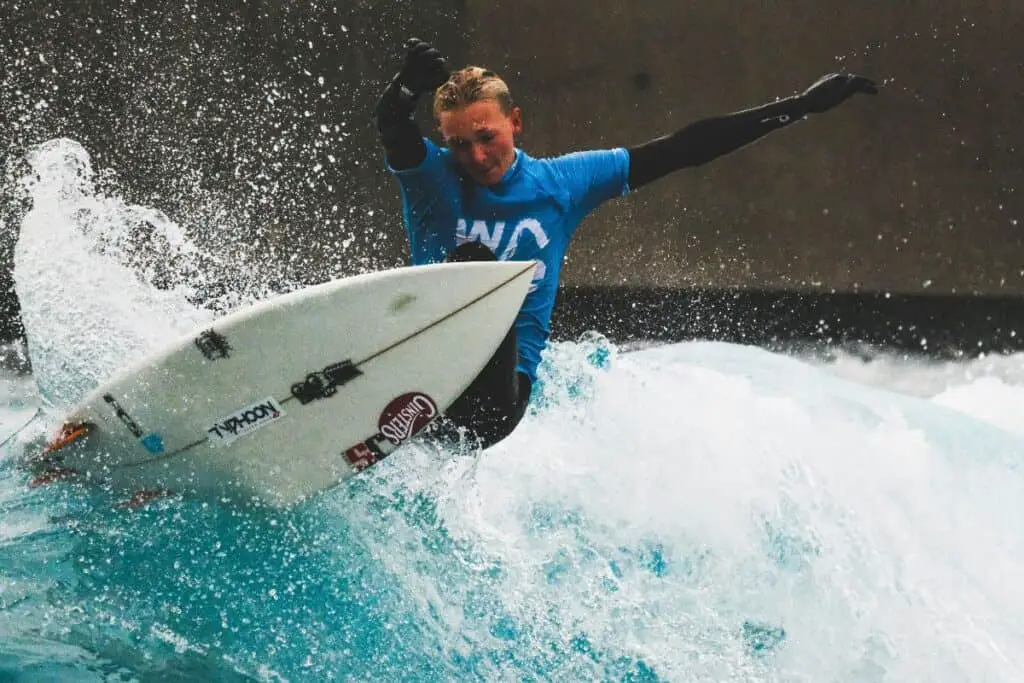
Your experience of riding a wave in a wave pool is made possible by devices known as wave machines.
These machines are engineered to manipulate water in a controlled environment to create waves similar to those you’d encounter in the ocean.
The core components include a pump, which is used to circulate the water, and a wave generator, which is responsible for the physical formation of waves.
One common type of wave generator uses a large plunger or hinged flap powered by pneumatic (air) systems.
The plunger, when activated, pushes water outwards, initiating a wave.
The specifics can vary: some wave pools use high-speed fans to blow air into a wide pipe equipped with a butterfly valve.
This valve can be adjusted to control the size and frequency of the waves, with the exhaust port releasing the pressurized air to displace water.
The process can also involve a tank that fills with water and then releases it to create a displacement.
The technology varies across different pools, with some setups capable of creating surfable waves up to several meters high.
Comparison to Ocean Waves
Unlike the unpredictable nature of the ocean, wave pools offer a controlled environment, allowing the adjustment of wave size and frequency to tailor the surfing experience.
Ocean waves are generated by wind, gravitational pull, and changes in underwater topography, which can lead to considerable variation in their size, strength, and timing.
Wave pools circumvent these variables. They use their wave machines to produce consistent and repeatable waves.
While wave pools cannot perfectly emulate the complexity of ocean wave patterns, advanced design has led to improvements, such as the ability to create barreling waves similar to an ocean reef break.
This allows surfers of different skill levels to practice and enjoy surfing in a predictable setting.
Types of Wave Pool Technology
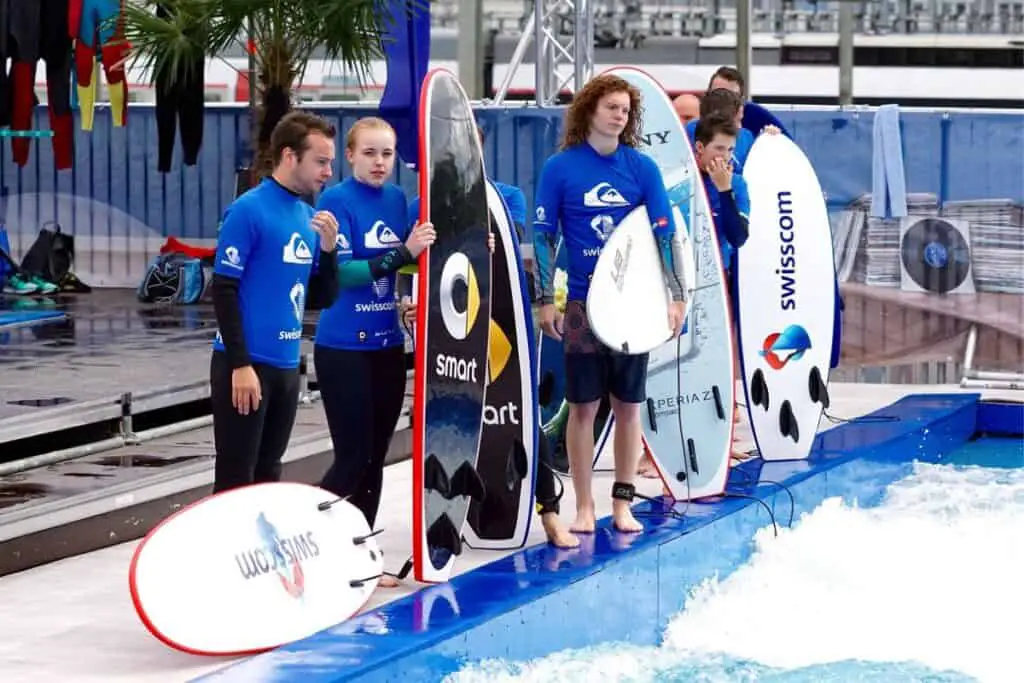
Wave pool technology has advanced, allowing you to experience ocean-like surf waves far from the coast. Different systems have been developed to create these waves, each with its own unique mechanism and feel.
Pneumatic Systems
Pneumatic wave pool systems use compressed air to generate waves.
PerfectSwell technology is an example in this category. They create waves by releasing blasts of air into the water, which in turn displaces the water surface and generates a wave.
This technology can produce various wave patterns, mimicking natural ocean swells.
Plunger and Hydraulic Systems
Plunger and Hydraulic systems typically involve large volumes of water being pushed into the pool to create a wave.
The Kelly Slater Wave Company utilizes a hydrodynamic ‘plow’ to move the water. By contrast, Surf Lakes employs a central plunger to displace water in all directions, creating concentric waves that can cater to surfers of different skill levels simultaneously.
Hydrofoil Technologies
Hydrofoil technology employs a submerged hydrofoil, similar to an underwater wing, which is moved through the water to generate waves.
Wavegarden showcases this method, having a submerged foil that is pulled along a track to create the desired wave.
This type of wave pool can offer a consistent and controlled surf experience, suitable for both beginners and experienced surfers.
Key Elements in Wave Pool Design

In ensuring the success and functionality of a wave pool, the design’s intricacies like bathymetry and the pool’s machinery are pivotal.
Bathymetry and Pool Contours
Your wave pool’s floor design, or bathymetry, dictates the shape and type of waves produced.
For instance, systems like the Wavegarden Cove employ carefully engineered contours to channel waves in a manner that mimics the ocean.
Your pool shape and size significantly influence wave quality, ensuring that the varying depths and contours interact correctly with the generated water movement for optimal surf conditions.
Wave Pool Machinery and Software
The machinery and software are central to the operation of a wave pool, encompassing the drive system responsible for wave generation.
Whether pneumatic, hydraulic, or using a Wavegarden Lagoon system, the technology you select determines the wave’s characteristics.
These systems require synchronized software to adjust variables like wave height, frequency, and shape.
For accurate wave creation, sophisticated software seamlessly integrates with the drive system to activate machinery, such as pumps and controllable sluice gates, often leading to cost variability based on complexity and capability.
Wave Pools in Practice
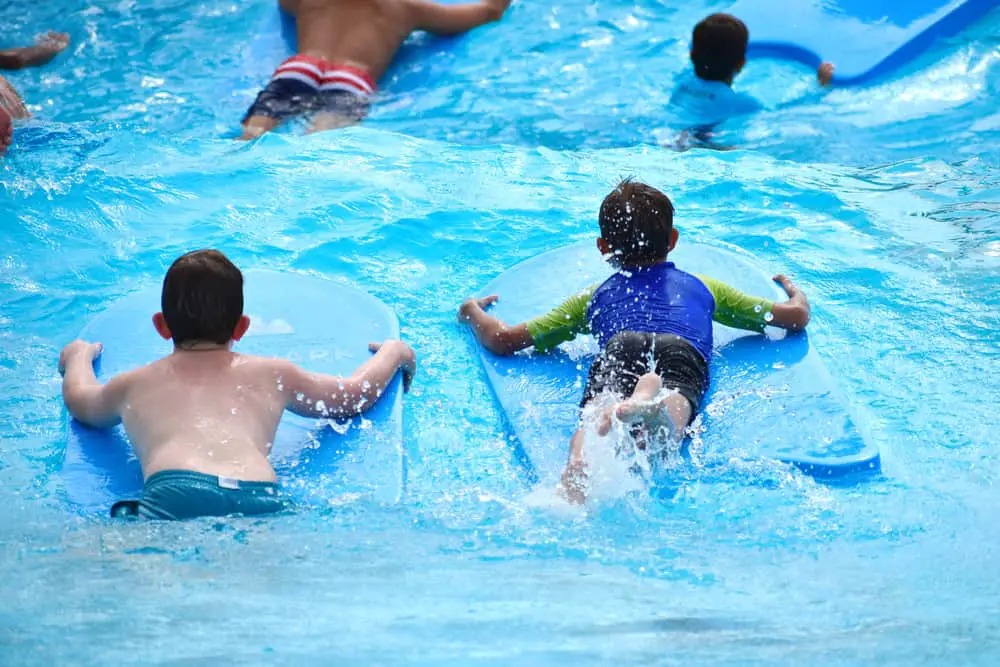
Wave pools are an engineering marvel that replicate ocean waves in a controlled environment. You can find them serving various purposes, from leisure fun to professional surf training.
Commercial and Recreational Uses
In commercial settings, wave pools provide a fun and safe environment for recreation.
Such facilities often replicate a beach-like experience, minus the uncertainties of the ocean.
Kelly Slater Wave Co and NLand are notable instances where technology and leisure intersect to bring consistent waves to enthusiasts.
Your visit to these venues means engaging with waves tailored to various skill levels, ensuring everyone from beginners to experienced surfers has a suitable challenge.
Professional Training Facilities
Professional surfers and coaches also recognize wave pools as technical platforms for consistent practice.
The predictability of the waves allows for focused training sessions.
Surf Ranch, backed by the World Surf League, exemplifies a venue where professionals fine-tune their techniques outside the variables of the open sea.
Such controlled conditions are key for athletes intent on perfecting their form and strategies.
Managing and Maintaining Wave Pools
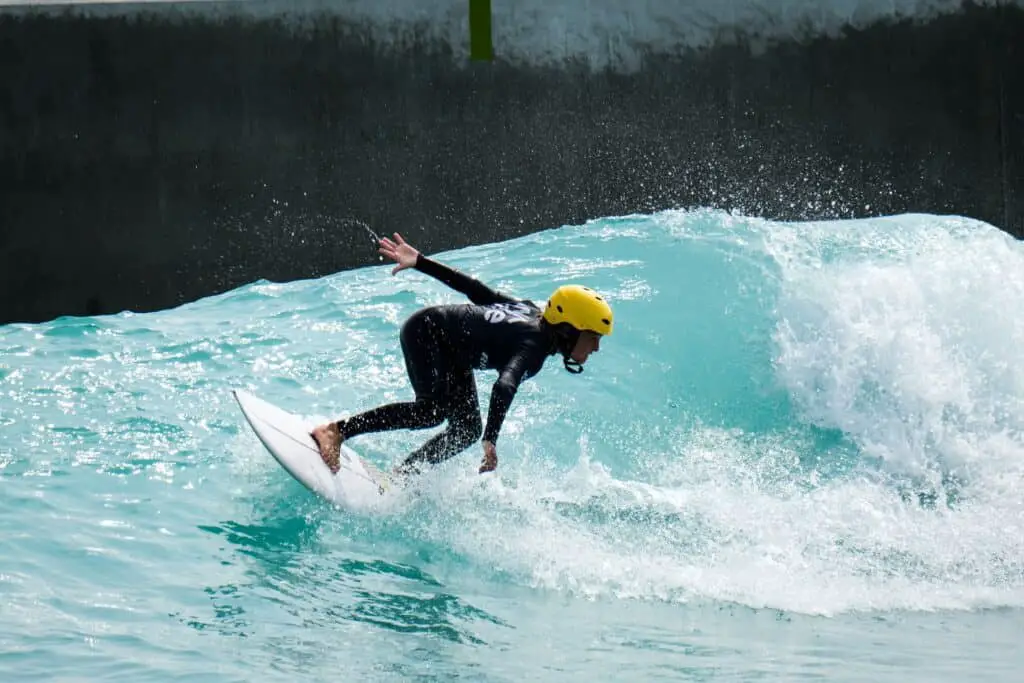
Wave pools require meticulous management and consistent maintenance to ensure the safety and satisfaction of their users. The complexity of their mechanisms demands careful attention to water quality and operational efficiency.
Water Quality and Safety
As you operate a wave pool, maintaining the water quality is paramount.
Regular testing of pH levels and chlorine content is essential to keep the water safe and sanitized.
You should adhere to these guidelines:
- Chlorine Levels: Maintain a chlorine concentration between 1-3 ppm to effectively disinfect the water without causing irritation to swimmers.
- pH Levels: Keep the pH levels between 7.2 and 7.8 for optimal sanitization and swimmer comfort.
- Lifeguards: Staff adequately trained lifeguards to monitor swimmer safety, manage crowds, and respond promptly to any emergencies.
Ensure the wave pool’s water is routinely tested throughout the day and that adjustments to chemical levels are made as necessary.
Operational Challenges and Solutions
Operating wave pools presents distinct challenges that require specific solutions:
- Crowd Management: Implement a timed entry system to control crowds and ensure a safe swimming environment for everyone.
- Mechanical Maintenance: Conduct regular inspections and maintenance on the wave-generating equipment to prevent malfunctions that could lead to safety hazards.
- Staff Training: Provide comprehensive training for operational staff to manage various scenarios efficiently and safely, from equipment failure to crowded conditions.
